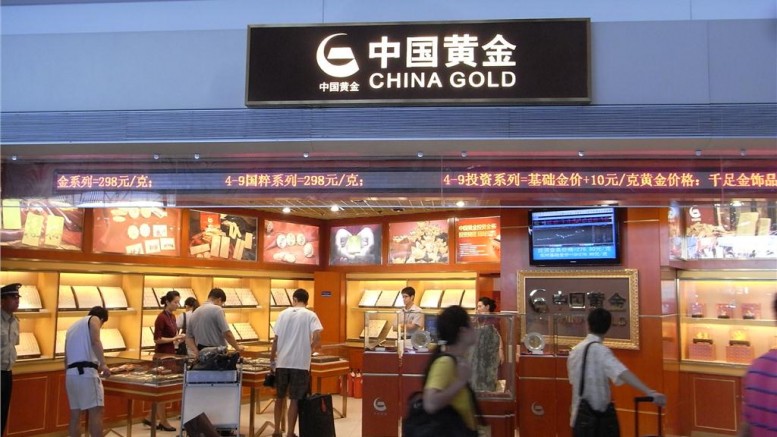Stocks swooned last week after U.S. President Donald Trump declared in a tweet on Aug. 1 that he would slap a 10% tariff on a further US$300 billion of Chinese imports to the U.S. starting on Sept. 1. (This does not include the US$250 billion already tariffed at 25%.)
The U.S. Chamber of Commerce, representing the interests of 3 million American businesses, claimed the threat of more tariffs “will only inflict greater pain” on American companies, farmers, workers and consumers, “and undermine an otherwise strong U.S. economy.”
For months now, the International Monetary Fund has warned that the U.S.–China trade war poses the biggest threat to the world economy, and as recently as June, said that the use of tariffs as a weapon against China was “undermining the global trading system.”
But Trump took the escalating trade dispute to another level in a tweet on Aug. 5, when he accused China of being a “currency manipulator,” after Beijing allowed its currency to briefly slip below seven renminbi to the U.S. dollar — a symbolic threshold last crossed in May 2008. (China’s central bank sets the exchange rate each morning and allows the renminbi, also known as the yuan, to fluctuate by 2% against the dollar during the day.)
In a subsequent statement, the U.S. Treasury Department said Secretary Steven Mnuchin, “under the auspices of President Trump,” had determined that China is a currency manipulator — the first time the department has accused Beijing of the offence since 1994.
The Peoples’ Bank of China argued the currency dip was due to Trump’s “unilateralism and trade protectionism measures, and the imposition of increased tariffs on China,” while the state-run Xinhua News Agency reported that Chinese companies had ceased buying American agricultural products. Xinhua called Trump’s plan for new tariffs “a serious violation” of the consensus reached when the U.S. president and Chairman Xi Jinping met in Osaka, Japan, in June.
The two superpowers have been locked in conflict since Trump took office in November 2016. Trump’s complaints about America’s trade deficit with China and accusations of Beijing’s unfair trading practices and intellectual property theft were rallying cries he used during his political campaign.
The trade war is already racking up significant casualties. Reuters news agency estimates that the Trump administration “has already rolled out up to US$28 billion in federal aid for U.S. farmers since the trade war began last year, and the Agriculture Department to date has made US$8.6 billion of direct aid payments to U.S. farmers.”
U.S. Global Investors calculates that U.S. soy exports to China in the first six months of the year stood at 5.9 million tons (5.4 million tonnes), “down a whopping 70% from the same period two years earlier, and its lowest level since 2004.” The New York Times points out that China is now resorting to “new patterns of trade,” like buying more soybeans from Brazil.
Repercussions of the trade war are radiating far and wide. On Aug. 7, the central banks of New Zealand and Thailand cut their rates half a percentage point, and the Reserve Bank of India trimmed its benchmark rate 0.35 percentage point.
Many analysts see the headwinds from trade tensions slowing business investment and fueling uncertainty. Raymond James says in an Aug. 9 research note that capital spending assumptions for next year are “very concerning.”
“S&P 500 capex estimates for 2020 are about flat year-on-year, down from 5% growth in 2019, while the MidCap 400 and Russell 2000 capex estimates are already down mid-single digits for 2020,” the brokerage stated. “This is similar to the capital spending decline seen in 2015/ 2016 and argues for, at the very least, an industrial recession, similar to what occurred in 2015/2016, unless lower rates can reinvigorate growth.”
It is far from clear where the trade war will go from here, and Trump’s rants make de-escalation difficult.
“If the U.S. implements the tariff measures, China will have to take necessary countermeasures to resolutely defend the core interests of the country and its people,” a spokeswoman for China’s foreign ministry warned.
Some worry China could use its dominance of rare earths and rare earth magnets to restrict exports to the U.S. — a move it threatened against Japan in 2010, during a dispute with the island nation.
Chairman Xi pointedly paid a visit in May to a rare earths magnet maker in Ganzhou, Jiangxi province, describing the metals as an “important strategic resource.” The photo-op took place less than a week after the U.S. blacklisted Chinese telecom giant Huawei over national security concerns.
Bank of America Merrill Lynch estimates that China produced 78% of the world’s rare earths in 2018, and while “a complete ban to the U.S. would be impractical, as the U.S. could import from other countries … nonetheless, some of these measures may come at a cost, so export restriction may be a headache, at least in the short-term.”




Be the first to comment on "Editorial: Is the US–China trade war the new normal?"